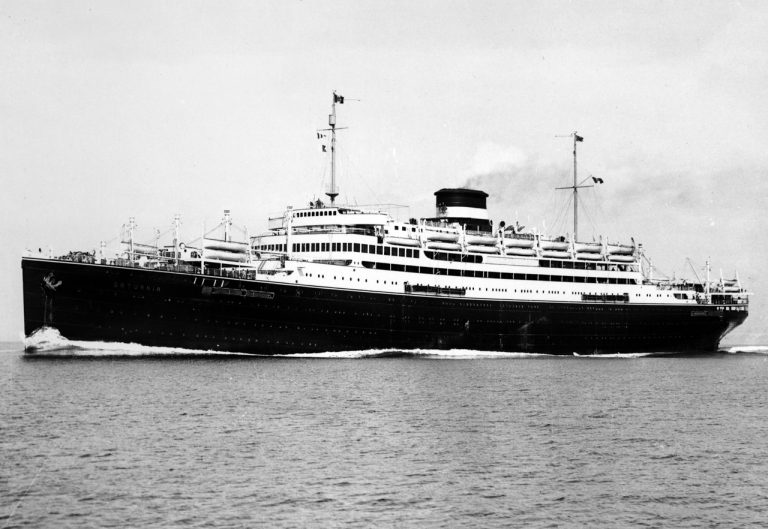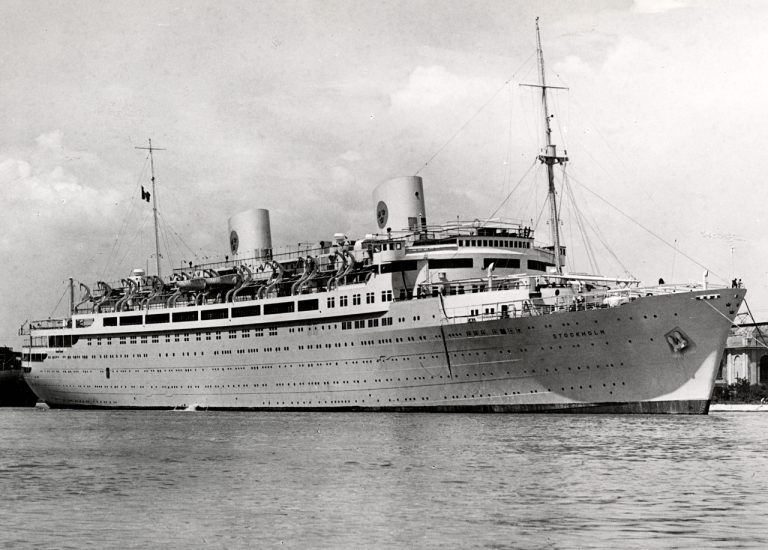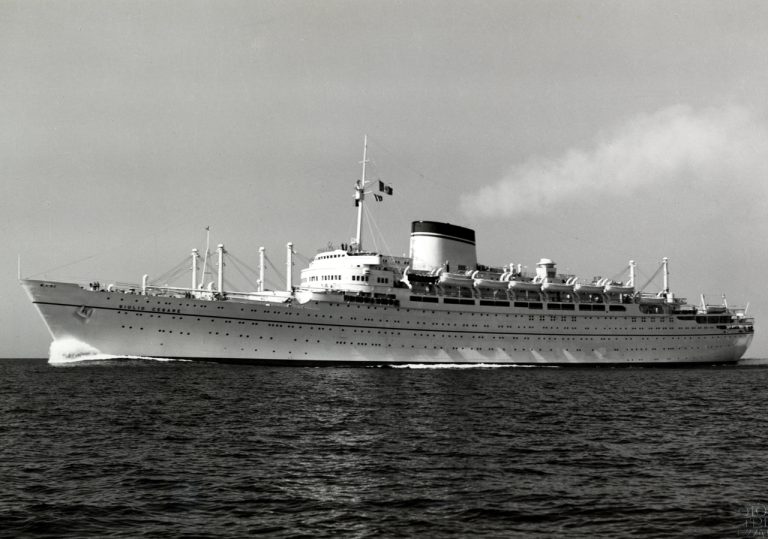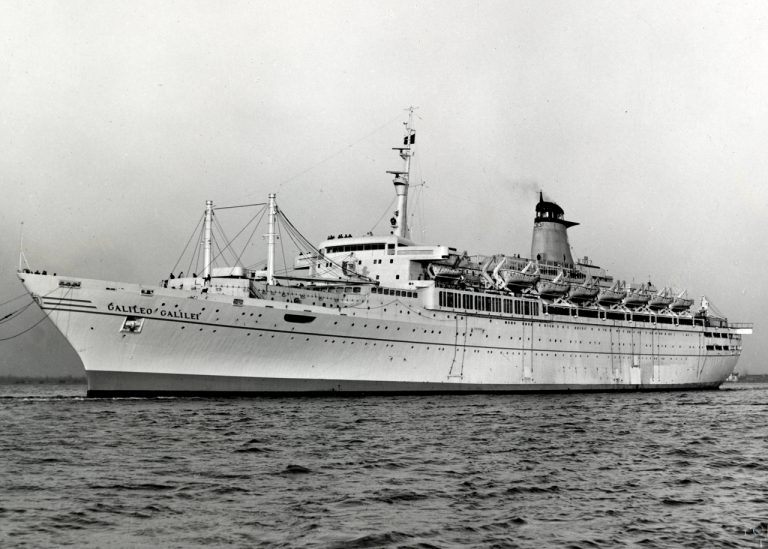The Famous Ocean Liners of Monfalcone
The Monfalcone shipyard is known today primarily for its large series of cruise ships delivered since 1990; however, in its past, it also built famous ocean liners that made history. Today we remember the seven most important ones.
The steamship Kaiser Franz Joseph I was the largest ocean liner in the Austrian merchant fleet. It was built with subsidies for maritime connections with the Americas provided by the Austrian Union from the Vienna Government. Intended for the New York route, it made its maiden voyage in May 1912, arriving in the Big Apple still shaken by the Titanic disaster, which had occurred just a month earlier. After World War I, it was renamed President Wilson and sailed under the Italian flag. In 1929, it was sold to Lloyd Triestino, which named it Gange and assigned it to the India and later Egypt routes. Finally, in 1936, it was transferred to the Società Adriatica and named Marco Polo. After serving as a troop transport during World War II, it was sunk by the Germans in 1944 to block the entrance to the port of La Spezia.
PF Kaiser Franz Joseph I
The motor ship Saturnia, launched in 1925, entered service in 1927 with Cosulich colors. At that time, it was the largest diesel-powered ocean liner. It was primarily used on the Trieste-New York line, but by 1936, after being transferred to Italian Line, it underwent a major refit: the experimental engines were replaced, and most of the hotel areas were modified. It originally had a “historicist” décor, which was replaced with a more modern “Novecento” style. During World War II, it was used for the repatriation of refugees from Italian East Africa, and after the Armistice, it was converted by the Americans into a hospital ship. Returned to Italy in 1946, it resumed its transatlantic service from Genoa and later again from Trieste after its second redemption (1954). It concluded its career in 1965 and was then sold for demolition.
The motor ship Stockholm, the ship that “lived twice” (so called for its tragic history), was commissioned from CRDA of Monfalcone by Svenska Amerika Linien after a competition among the most important shipyards in Europe. After the first launch, it suffered a severe fire in December 1938, just months before delivery. The superstructures and much of the hull were demolished and rebuilt. A few months after the new launch, Italy entered the war, but the outfitting work continued, and by 1941 it was ready for delivery. The shipowner, due to the ongoing conflict, refused the ship, which was then purchased by the Società Italiana and renamed Sabaudia. It remained out of service in the port of Trieste until the Armistice, after which it was moved to the Muggia Basin by the Germans. In July 1944, it was hit by British bombs, sinking on its side; the wreck was demolished in 1948.
MN Saturnia
MN Stockholm
The motor ship Giulio Cesare, the first Italian ocean liner built after World War II, was delivered in 1951 and featured an innovative design compared to previous liners. Its sleek bow, rounded stern, superstructures topped by a large aerodynamic funnel, and a single shaped mast would serve as examples for subsequent ships. The interior design was rational and reflected the good taste of Italy at that time: the spacious salons, bright promenades, and outdoor pools were its most beloved features. It was designed for the South America line and helped transport thousands of compatriots to Brazil and Argentina in search of fortune. It was the first Italian ocean liner of the postwar period to be prematurely demolished in 1974 after a machinery failure.
The turbo ship Galileo Galilei, built for Lloyd Triestino, was designed for the Italy-Australia route. It was awarded the best achievement in Italian naval engineering from 1957-63 by the A.N.A.I. (National Association of Italian Engineers and Architects); this is practically the only official recognition obtained by Nicolò Costanzi for one of his works. After its line service ended, it was converted into a cruise ship at the Palermo shipyard, altering the original superstructure. It was later transferred to the Greek company Chandris and, in 1989, as Meridian, it inaugurated the Celebrity Cruises brand, now a famous premium brand of the Royal Caribbean group. In 1998, it changed owners and names again: as Sun Vista, it sank in 1999 in the Straits of Malacca following a fire in the engine room.
MN Giulio Cesare
TN Galieleo Galilei
The turbo ship Oceanic, initially conceived as an ocean liner, was used exclusively as a cruise ship. It can be considered Nicolò Costanzi’s masterpiece: it was rightly nicknamed “the ship of the future” as it anticipated the aesthetic and functional standards of passenger ships in the following years. It entered service in 1965 with the colors of Home Lines and featured the first pool with a retractable roof installed on a ship. An infrared heating system allowed the lido to be heated, enabling swimming even in cold climates. In the following years, when ocean liners were supplanted by airplanes, the concept of the “vacation ship” gained strength, looking to the Oceanic as the progenitor of this new generation of ships. It sailed for a long time, changing names and owners several times, ending its career as a “humanitarian” ship in 2012; it was subsequently demolished.
TN Oceanic
TN Eugenio C.
The turbo ship Eugenio C. was the largest ocean liner built in Italy for national private ownership, and the last giant of this type launched by the Monfalcone shipyard. It represents the peak of the “Costanzi” hull development where the “swan neck” bow and the “wave seat” stern optimized the performance of the underwater body while combining the beauty of the hull’s line. The hotel area’s “concept design” was the work of Nino Zoncada, whose signature remains indelible in Costa’s fleet history. It was intended for the South America line, where on its first voyage, it set the record for the crossing at an average speed of 27.5 knots. Converted into a cruise ship and renamed Eugenio Costa, it remains the most famous ship that has sailed for Costa Cruises to date. It was demolished in 2005 after changing names and owners in its final years.
Don’t miss news, updates, and reviews about the world of cruises on Cruising Journal with photos, videos, and cruise offers.







